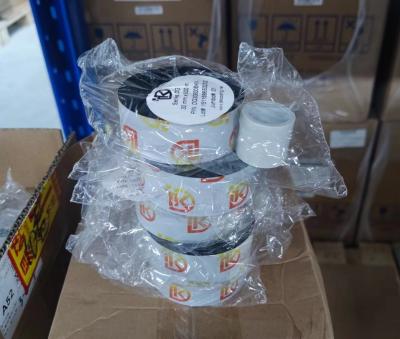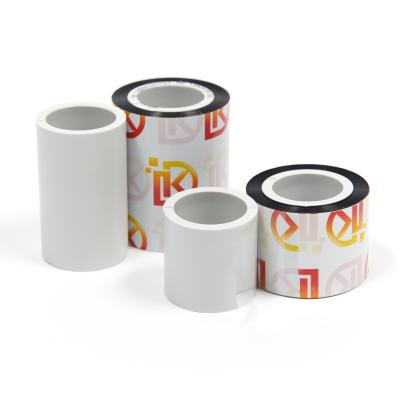


| Price | US $9 / piece |
| MOQ | 120 pieces |
| Delivery Time | 5-8 work days |
| Brand | Dikai |
| Place of Origin | Shanghai |
| Model Number | DC |
| Payment Terms | T/T |
| Supply Ability | 50000 Pieces per month |
| Brand Name | Dikai | Payment Terms | T/T |
| Place of Origin | Shanghai | Price | US $9 / piece |
| Delivery Time | 5-8 work days | Length | 500m |
| Minimum Order Quantity | 120 pieces | Color | Black, White |
| Model Number | DC | Supply Ability | 50000 Pieces per month |
| Width | 32mm, 33mm, 55mm | Name | DC Thermal Transfer Ribbon |
Ink Inside/Outside Wax/Resin Thermal Transfer Ribbon Used On Thermal Transfer Overprinter
Thermal transfer ribbons for TTO printers. Near edge ribbons have been developed for high-volume printing processes at high speeds. Suitable substrates are paper, various plastics and flexible packaging foils.
The Near edge technology makes it possible to integrate identification marking directly into the production process. We offer near edge ribbons that are wax / resin or resin based. these ink ribbon types have been developed for different stress requirements and surfaces. resin ribbons are more durable than wax/resin ribbons.
Companies that distribute large volumes of goods use thermal transfer printing with near edge ribbons because it guarantees resistant print, even at high print speeds. It’s used for packaging in the food industry, among others.
A,
transferability
refers
to
the
percentage
of
the
ink
layer
of
the
ribbon
transferred
to
the
printing
medium,
whether
the
ink
layer
can
be
completely
thermally
transferred
to
the
printing
medium
(plastic,
paper,
composite
film
and
other
materials),
and
how
much
ink
can
be
transferred.
B,
adhesion
refers
to
the
ink
layer
printed
on
the
printing
medium
(plastic,
paper,
composite
film
and
other
materials)
adhesion
fastness
and
abrasion
resistance.
C,
clarity
refers
to
the
ink
layer
heat
transfer
to
the
printing
medium,
the
printed
content
is
clear
and
beautiful.
D.
Adaptability
refers
to
whether
the
thermal
transfer
ribbon
can
be
printed
in
various
media
(plastic,
paper,
composite
film,
etc.)
and
production
environment
(cooking,
freezing,
etc.),
and
whether
the
printing
effect
can
meet
the
requirements
of
customers.
E,
temperature
refers
to
the
temperature
of
the
thermal
transfer
ribbon
in
use.
Different
characteristics
of
the
thermal
transfer
ribbon
cause
that
the
temperature
is
different
in
actual
use,
and
the
printing
effect
is
different
at
different
temperatures.
Only
when
the
printing
effect
is
the
best,
the
temperature
is
the
best.



